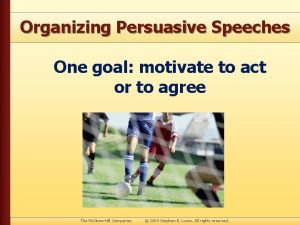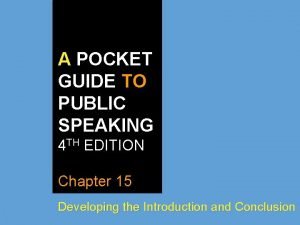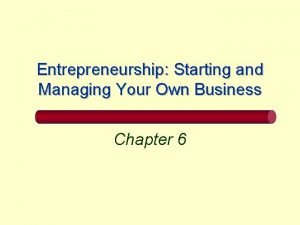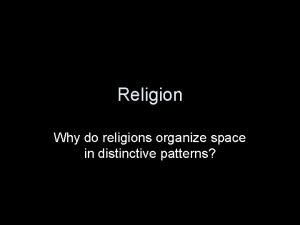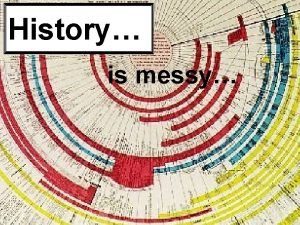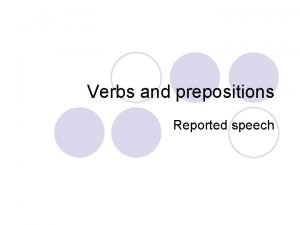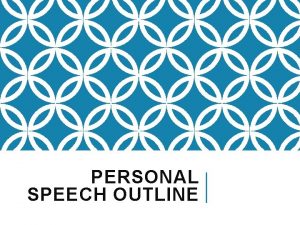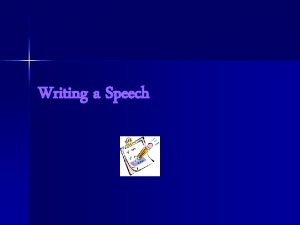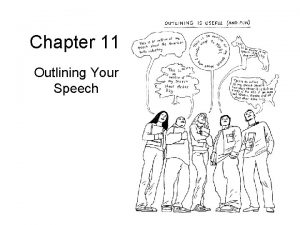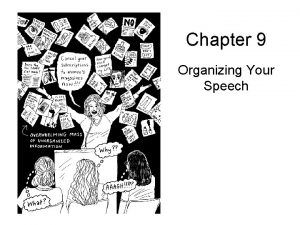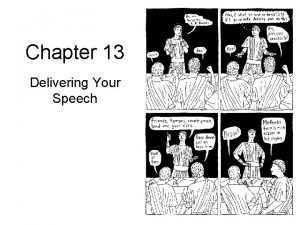Organize your Speech Chapter 7 Why Organize Guide









- Slides: 9

Organize your Speech Chapter 7

Why Organize? • • Guide your preparation Guide your listeners Help your listeners remember Establish/Maintain credibility

Develop Your Main Points (Step 5) • Use Brainstorming to question your thesis ▫ Ask Why? ▫ Free-write without thinking or questioning • Thinking of your audience, find 2 -5 main points • Word your main points

Organize Your Main Points (Step 6) • Topical Pattern ▫ Divides into sub-categories ▫ Useful when each main point is of equal importance • Temporal Pattern ▫ Uses chronological order ▫ Useful when discussing events or a process over time

Organize, Cont. • Spatial Pattern ▫ Uses space: structure of a place or object ▫ Useful when describing a place or object • Problem-Solution Pattern ▫ States problem, then gives solution ▫ Useful for persuasive speeches • Cause-Effect Pattern ▫ Divides speech into cause and effect as main points ▫ Useful for showing causal connection between two elements

Organize, Cont. • Monroe’s Motivated Sequence ▫ Used in many persuasive presentations ▫ Five steps �Gain Attention �Establish Need �Satisfy the Need �Visualize the Need in Action �Ask for Action

Construct Your Introduction, Conclusion, and Transitions (Step 7) • Introduction ▫ ▫ ▫ Gain Attention WIIFT (Relate) Internal Preview Establish Credibility/Introduce Yourself Thesis Statement

Intro, Conclusion, Transitions, Cont. • Conclusion ▫ Internal Summary ▫ Provide Closure/Memorable ▫ Remember your Bookends • Transitions ▫ Connectives between Intro, Body, Conclusion ▫ Previews and Reviews ▫ Signposts

Constructing Your Outline • Preface with Identifying Data (Purpose Statements) • Outline the Introduction, Body, and Conclusion • Insert Transitions • Add References • Use consistent set of symbols (Follow APA) • Examples in text starting on page 157
 Andreas carlsson bye bye bye
Andreas carlsson bye bye bye Attention need satisfaction visualization action
Attention need satisfaction visualization action Previewing helps the audience mentally organize a speech.
Previewing helps the audience mentally organize a speech. Managing your own business
Managing your own business Why do religions organize space in distinctive patterns?
Why do religions organize space in distinctive patterns? Why do historians organize history chronologically?
Why do historians organize history chronologically? Dont ask
Dont ask Give us your hungry your tired your poor
Give us your hungry your tired your poor Reported speech prepositions
Reported speech prepositions What is pure speech
What is pure speech

